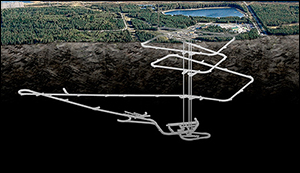Nuclear Waste Deep Storage Plans Approved
18. 11. 2015 | IEEE Spectrum | www.spectrum.ieee.org
Finland’s government issued a construction license to nuclear disposal consortium Posiva. The license gives the group approval to build a storage facility on Olkiluoto Island, Finland, designed to last 100,000 years.
The facility would be the first of its kind in the world. Since the beginning of the nuclear power age, energy firms have paid to store nuclear waste in temporary holding ponds unlikely to last more than a couple of centuries. The Posiva facility, decades in the planning, may pioneer a more sustainable era of disposal.

Nuclear waste consists of metal rods composed mostly of uranium with a molecular weight of 238. Over time, the depleted uranium atoms release radioactive particles - a process called decay - that converts the uranium into lighter elements. Over billions of years, those atoms decay, too. By the end, all that is left is lead.
To provide safer and more permanent storage, Posiva proposes to bury electrically-welded iron-and-copper capsules 400 meters underground. The capsules would be surrounded by clay barriers and capped with rubble and cement. The facility, which would have a 6,500 metric ton capacity, could likely hold Finland and Sweden's projected future nuclear waste. But that capacity doesn’t come close to the volume required by larger nations such as the United States, which has over 70,000 metric tons of waste piled up, and produces an additional 2,200 tons a year.
Read more at IEEE Spectrum
Image Credit: Posiva
-jk-




